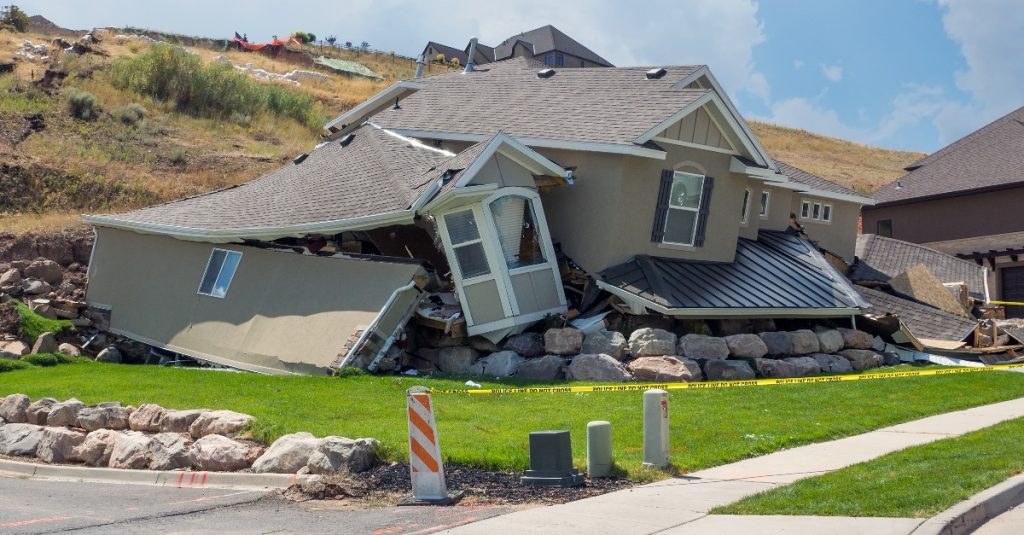Without thorough due diligence, buying a house can be a risky proposition. So, as interest rates continue to rise and the housing market cools, there has never been a more critical time to tread carefully. The open for inspection is your chance to walk through your potential home to assess its condition firsthand. But if you don’t have the requisite knowledge and experience, how can you tell if it’s defective? Tim Stafford, Head of Research at WBP Group, shares some of the common issues our valuers see while on the job so that you can keep an eye out for them.
Source: American Basement Solutions
Rotted bearers and joists – Commonly referred to as the sub-floor, bearers and joists are part of the structure that supports your floorboards. Timber is susceptible to water damage which can lead to rotting. To determine the condition of the sub-floor, you’ll need access underneath the house. If access isn’t possible, you may be able to identify a potential issue by merely walking through the house. If rotting has occurred, the floors will feel uneven, creak, and be bouncy when you walk over them. The furniture may also rattle.
Rotted timber stumps – Also part of the sub-floor, timber stumps are similarly susceptible to water damage. Issues with the sub-floor are more likely in older homes, especially those built before 1950. A rotting sub-floor should be relatively straightforward to fix, especially if there is easy access under the house.
Source: Building Inspectors Australia
Source: Repointing Brickwork
Cracked brickwork – Is typically the result of movement in the building’s foundations. Minor cracking is common, especially in older homes, and can be relatively straightforward to fix. If the cracking is extensive, it may indicate a more significant structural problem.
Rotted weatherboards – These are a common problem, especially in older homes and often occur when the paint job is old and cracked. Replacing rotted weatherboards should be relatively straightforward.
Source: Maintaining My Home
Credit: Bernie Banton Foundation
Asbestos – This building material becomes a serious health risk when the fibres are released into the air and breathed into the lungs. The Australian Government’s Asbestos Safety and Eradication Agency estimate that one-third of all homes in Australia contain asbestos products. Most people can’t tell whether a building material contains asbestos just by looking at it. Only scientific testing of a sample by an accredited National Association of Testing Authorities (NATA) Asbestos Testing Laboratory can confirm the presence of asbestos. For more information, visit nata.com.au.
Lath and plaster wall – This construction method was predominantly used in houses built before 1950. Thin timber strips (lath) were placed horizontally across the wall. Then, solid plaster was applied over the top. Lath and plaster is susceptible to building movement, so cracking can be an ongoing issue. Minor cracking can be relatively straightforward to fix, but if the cracking is more extensive, it may indicate a more significant structural problem.
Credit: Melbourne Plastering Services
Credit: CSIRO
Missing smoke detectors – It became law for all homes built after 1997 to have smoke detectors. Any property built before this date may not necessarily have them. Make sure there’s at least one working smoke detector installed. Ideally, you want one located next to the entrance of each bedroom.
Leaking shower – This is typically the result of a cracked tile or due to floors and walls being incorrectly waterproofed before the tiles are laid. In older homes, you will likely see mouldy plasterboard or swollen skirting boards around the leaking area. In newer homes where the waterproofing has failed, evidence of the leak may take some time to present itself.
Credit: Epoxy Grout Pro
Credit: DIY Doctor
Mould – This is typically the result of poor ventilation or a water leak in the bathroom, kitchen, or laundry. If only a small area is affected, it should be relatively straightforward to fix. However, if the affected area is more extensive, you may need to demolish the entire room and start over.
Water leaks – These are typically the result of a damaged surface, building movement, or poor build quality. Common causes include holes in roofs and apartment balconies incorrectly waterproofed. When water penetrates through a hole, you should see evidence of a stain where water has pooled and dried. In the event of poor workmanship, you may not find any evidence until it’s too late, especially if you’re buying a newly built home.
Credit: Connected Restoration
Credit: Whilehome
Rotted window Frames – Like weatherboards, rotting is typical in older homes and often occurs when the paint job is old and cracked. If the rotting is extensive, you may need to replace the entire window frame, which will be expensive, especially if the rotting is across several windows.
You’ve found some issues
Any house that’s not brand new (and even some that are) will likely have some defects. It’s an unfortunate side effect of aging. The question is, what should you do after you’ve discovered a defect?
I suggest you apply the following rule of thumb. Treat anything electrical (defective wiring), plumbing (including water leaks) or structural (foundations, walls, and roofs) as a substantial issue and organise a building and pest inspection to determine just how significant these problems are.
If the defects are only cosmetics, there is less need to worry.
Think carefully about how you’ll assess your potential home’s condition and whether you need to obtain a building and pest inspection before you buy it. Even if you don’t find any noticeable issues, there’s still a risk that your home may be defective.
You must be aware of the risks involved when buying a house because it’s a significant financial commitment. The best way to mitigate this risk is to have a plan in place before you start attending the open for inspection. If you know the cost of fixing the problem beforehand, you can factor this in when it comes time to make an offer.
The material in this publication is of the nature of general comment only and does not represent professional advice. It is not intended to provide specific guidance for particular circumstances, and it should not be relied on as the basis for any decision to take action or not take action on any matter which it covers. Readers should obtain professional advice where appropriate before making any such decision.
If you would like to get more helpful valuation insights and property related news, follow WBP Group on LinkedIn.




















